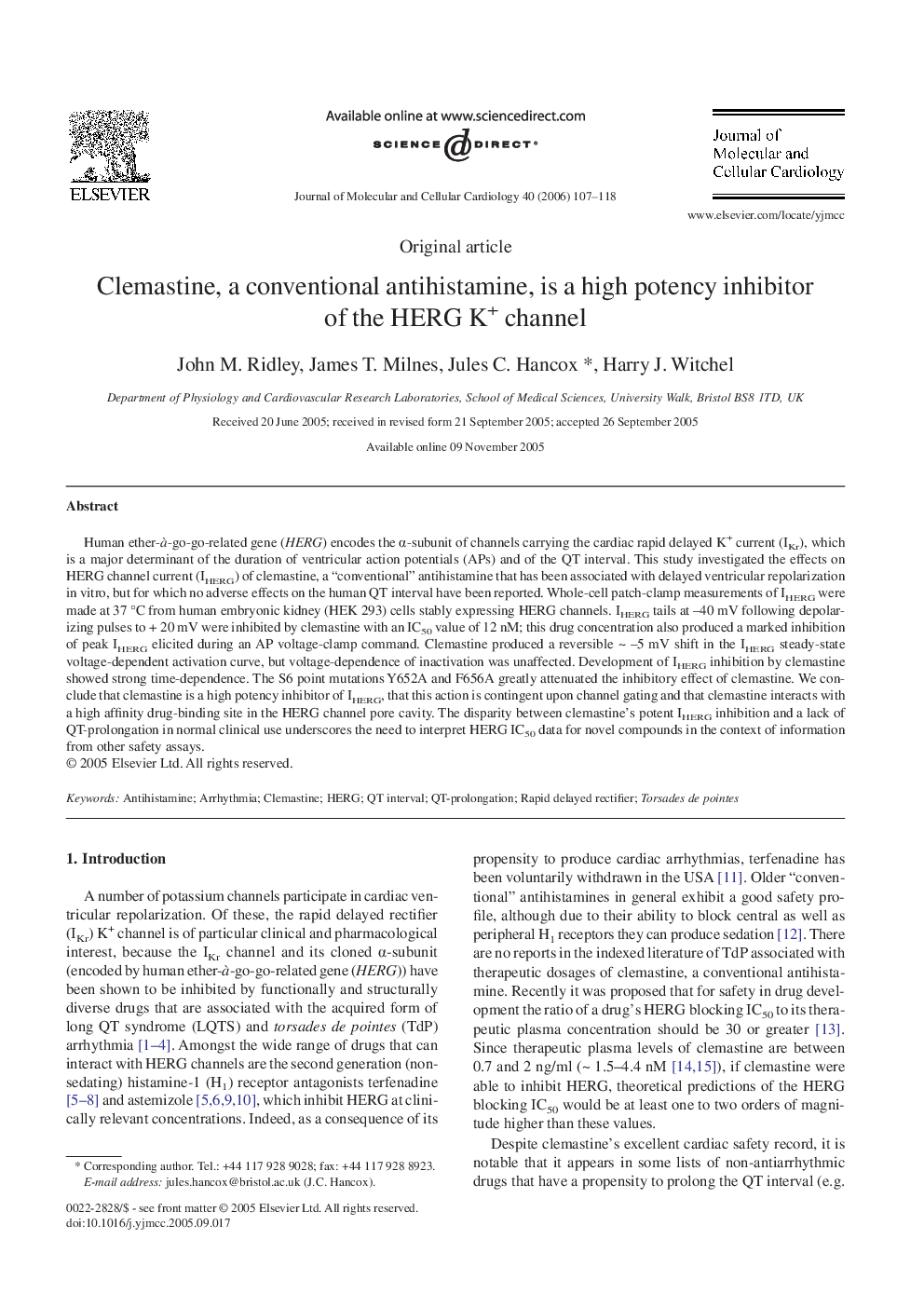| Article ID | Journal | Published Year | Pages | File Type |
|---|---|---|---|---|
| 2192564 | Journal of Molecular and Cellular Cardiology | 2006 | 12 Pages |
Human ether-à-go-go-related gene (HERG) encodes the α-subunit of channels carrying the cardiac rapid delayed K+ current (IKr), which is a major determinant of the duration of ventricular action potentials (APs) and of the QT interval. This study investigated the effects on HERG channel current (IHERG) of clemastine, a “conventional” antihistamine that has been associated with delayed ventricular repolarization in vitro, but for which no adverse effects on the human QT interval have been reported. Whole-cell patch-clamp measurements of IHERG were made at 37 °C from human embryonic kidney (HEK 293) cells stably expressing HERG channels. IHERG tails at –40 mV following depolarizing pulses to + 20 mV were inhibited by clemastine with an IC50 value of 12 nM; this drug concentration also produced a marked inhibition of peak IHERG elicited during an AP voltage-clamp command. Clemastine produced a reversible ~ –5 mV shift in the IHERG steady-state voltage-dependent activation curve, but voltage-dependence of inactivation was unaffected. Development of IHERG inhibition by clemastine showed strong time-dependence. The S6 point mutations Y652A and F656A greatly attenuated the inhibitory effect of clemastine. We conclude that clemastine is a high potency inhibitor of IHERG, that this action is contingent upon channel gating and that clemastine interacts with a high affinity drug-binding site in the HERG channel pore cavity. The disparity between clemastine's potent IHERG inhibition and a lack of QT-prolongation in normal clinical use underscores the need to interpret HERG IC50 data for novel compounds in the context of information from other safety assays.
